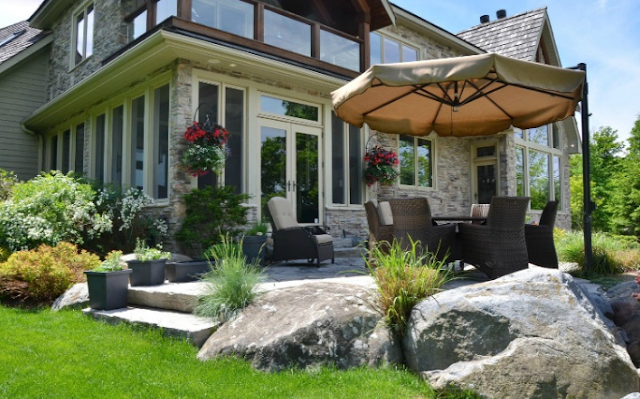What Is Cladding Used For? - You might wonder if getting cladding installed is the right thing to do for your home. Cladding has many functions besides being beautiful but do you really know what those functions are?
Cladding is often used on walls and more often on the exterior walls of your house. The material is strong enough to withstand corrosion that is often associated with the wind, sun and salty water of the coastal lines.
Because the technique of cladding has to do with layering many tiles along with adding a gap between the wall and the actual cladding, it acts as insulation for sound that is being carried close to the walls. Instead of the sound waves being carried across the general flat wall the cladding, which has many ridges and depth, will absorb any sound that goes near it.
The sun causes many problems when it comes to your home. It often heats up the roof and ceiling to a point where you can feel it on the inside of your house. The walls also have a role to play in the coolness of your house. Not only does it act as a ventilation system but it also has a thermal system of its own.
Cladding also uses the moisture in the atmosphere to keep the house cool. As it forces the moisture to be released from the inside of the cladding, the movement that is occurring allows the coldness to stay in the wall.
The beauty of this technique is also important for the strength. Since there are layers and different positions in which the paving tiles are installed, it creates an incredible strength with all the forces that are being applied to each other.
Not only does the paving technique benefit you, but it also makes it easier to design a house. There are often many factors you have to think about in the designing process but due to the fact that cladding has so many functions, the complicated factors are already factored in. You will also not have to worry about certain ventilation systems, corrosion damages and maintenance for your house in general.
The idea for cladding is to improve the appearance of your house while adding purpose at the same time. Our homes need so much protection because of the hectic weather conditions we encounter on regular basis.
If you ever think of renovating, make sure to go for cladded walls. Not only will you spend a minimum amount of money but you will also save yourself from future wall damage that you experienced in the past.
The Paving Warehouse & Wonder Rock, masters in the art of simulated rock, are no ordinary stone masoners. The Paving Warehouse is South Africa's leading manufacturer of simulated rock, with applications both indoors and outdoors, each stone cast is a classic.
See also:
Tips on How to Protect Your Plants From Frost
5 Types of Walls for a Residential Masonry Project
Is Your Home In Need Of Tuckpointing?
Read more
Cladding is often used on walls and more often on the exterior walls of your house. The material is strong enough to withstand corrosion that is often associated with the wind, sun and salty water of the coastal lines.
Because the technique of cladding has to do with layering many tiles along with adding a gap between the wall and the actual cladding, it acts as insulation for sound that is being carried close to the walls. Instead of the sound waves being carried across the general flat wall the cladding, which has many ridges and depth, will absorb any sound that goes near it.
The sun causes many problems when it comes to your home. It often heats up the roof and ceiling to a point where you can feel it on the inside of your house. The walls also have a role to play in the coolness of your house. Not only does it act as a ventilation system but it also has a thermal system of its own.
Cladding also uses the moisture in the atmosphere to keep the house cool. As it forces the moisture to be released from the inside of the cladding, the movement that is occurring allows the coldness to stay in the wall.
The beauty of this technique is also important for the strength. Since there are layers and different positions in which the paving tiles are installed, it creates an incredible strength with all the forces that are being applied to each other.
Not only does the paving technique benefit you, but it also makes it easier to design a house. There are often many factors you have to think about in the designing process but due to the fact that cladding has so many functions, the complicated factors are already factored in. You will also not have to worry about certain ventilation systems, corrosion damages and maintenance for your house in general.
The idea for cladding is to improve the appearance of your house while adding purpose at the same time. Our homes need so much protection because of the hectic weather conditions we encounter on regular basis.
If you ever think of renovating, make sure to go for cladded walls. Not only will you spend a minimum amount of money but you will also save yourself from future wall damage that you experienced in the past.
The Paving Warehouse & Wonder Rock, masters in the art of simulated rock, are no ordinary stone masoners. The Paving Warehouse is South Africa's leading manufacturer of simulated rock, with applications both indoors and outdoors, each stone cast is a classic.
See also:
Tips on How to Protect Your Plants From Frost
5 Types of Walls for a Residential Masonry Project
Is Your Home In Need Of Tuckpointing?


















